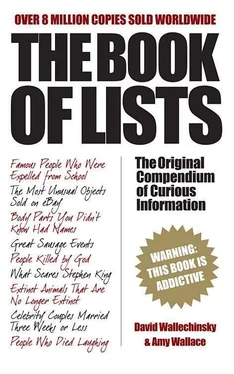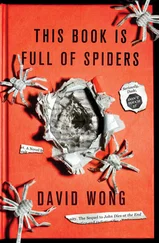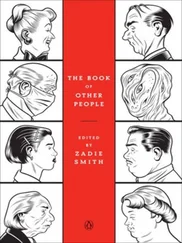MENGISTU HAILE MARIAM, Ethiopia
Mengistu was a member of the military junta that ousted Haile Selassie in 1974. By 1977 Mengistu had consolidated his personal power. While the Ethiopian people were suffering through a series of droughts and famines, Mengistu concentrated on brutally suppressing his opponents. Bodies of political prisoners who had been tortured to death were displayed in public and shown on television. Mengistu’s ability to beat back various secessionist armies finally failed, and on May 21, 1991, he resigned and fled the country. He settled in Zimbabwe, where he was welcomed by that country’s dictator, Robert Mugabe.
MOBUTU SESE SEKO, Congo
After taking power in 1965, Mobutu amassed a huge fortune through economic exploitation and corruption, leading some observers to dub the government a ‘kleptocracy’. He stole more than half of the $12 billion in aid that Congo (formerly Zaire) received from the International Money Fund during his 32-year reign, saddling the country with a crippling debt. On May 18, 1997 Mobutu fled the country as rebel forces led by Laurent Kabila seized the capital. For his exile, Mobutu could choose between luxury residences in Morocco, South Africa, France, Belgium, Spain and Portugal. The wine collection at his castle in Portugal was worth an estimated $23 million. Mobutu didn’t have much time to enjoy his ill-gotten luxuries: he died on September 7, 1997, of prostate cancer.
MANUEL NORIEGA, Panama
Noriega was raised in a poor family of Colombian background. Something of an ugly duckling, he found his place in the military. He rose rapidly to become head of Panama’s intelligence service. In 1983 he took command of the national army and, with it, the nation. A devious manipulator who played all sides, Noriega cooperated with the US government and the CIA while at the same time making huge profits from drug trafficking, money laundering and racketeering. When Noriega refused to abide by the results of a free election, President George Bush Sr ordered the invasion of Panama, and troops seized Noriega and brought him back to Miami to stand trial. He was convicted and sentenced to 40 years in prison. In December 1992 US District Court Judge William Hoeveler declared Noriega a prisoner of war, entitled to the rights guaranteed by the third Geneva Convention. He will be eligible for parole in 2006, although the Panamanian government has sought his extradition because in 1995 he was tried in absentia and found guilty of murder.
AUGUSTO PINOCHET, Chile
As commander-in-chief of Chile’s armed forces, Pinochet led the 1973 coup that overthrew the elected government of Salvador Allende. For the next 17 years he ruled Chile with an iron fist, suspending parliament and ordering the abduction and murder of 2,000 political opponents. He did, however, agree to democratic elections in 1988, which he lost. In 1990 he stepped down as president, but retained control of the armed forces, a position that he still holds. Pinochet was arrested in Great Britain in 1998 and held under house arrest while the British government considered extradition requests from four countries. During his house arrest, he lived at Wentworth, an exclusive estate outside London, at a cost of $10,000 per month. In May of 2000 he was returned to Chile on medical grounds. He was then arrested in Chile, with more than 200 charges filed against him. In 2002 all charges were dropped after the Chilean Supreme Court declared Pinochet unfit to stand trial.
POL POT, Cambodia
Pol Pot was one of the few modern dictators whose genocidal policies were so horrible that they rivalled those of Adolf Hitler. As leader of the notorious Khmer Rouge, Pol Pot launched a four-year reign of terror (1975–79) that turned Cambodia into one large forced-labour camp and led to the deaths of an estimated 1 million people. When Vietnamese forces finally drove the Khmer Rouge from power in 1979, Pol Pot and his followers set up shop in Thailand and northern Cambodia, where, with the encouragement of the government of the United States, he continued to be supported by the governments of China and Thailand. As late as 1996, Pol Pot was still executing Khmer Rouge opponents. He finally died of heart failure on April 15, 1998.
ALFREDO STROESSNER, Paraguay
Stroessner seized power in a 1954 military coup and held on for over 34 years, thus setting a record as the longest-ruling head of state in the western hemisphere. He was finally deposed in February 1989. He flew to exile in Brazil with one of his sons, while the rest of his family moved to Miami. In April 2004 the Paraguayan government paid compensation to 34 victims of Stroessner’s repression.
SUHARTO, Indonesia
Shortly after seizing the presidency in a 1965 coup, Suharto launched an anti-Communist and anti-Chinese campaign that killed at least 500,000 people. In 1975 the Indonesian army invaded the former Portuguese colony of East Timor and killed 200,000 people — more than a quarter of the island’s population. Despite these genocides, the US supported Suharto as an anti-Communist throughout the Cold War. The recession that hit East Asia in 1997 sent the Indonesian economy into free-fall. As increasing numbers of demonstrators took to the streets, Suharto was forced out of office in May of 1998. In April of 2000, Suharto was put on trial for misappropriating $571 million from various charities that he controlled. However, in September, a panel of judges dismissed the charges, concluding that Suharto, who had suffered several strokes, was medically unfit to stand trial. They also lifted a house arrest that had been imposed on Suharto. The decisions led to rioting in the streets. Unable to prosecute Suharto himself, Indonesian authorities arrested his son, Tommy, and convicted him of murder.
CHARLES TAYLOR, Liberia
In 1989 Taylor launched a revolt against the Liberian government, beginning 14 years of near-constant civil war. In 1997 Taylor was elected president, drawing 75% of the vote from a populace hoping his election would end the warfare. Taylor’s regime became increasingly repressive and brutal. He was notorious for using child soldiers, organised into ‘Small Boy Units’. Even as civil war resumed in Liberia, Taylor participated in conflicts in nearby Guinea, Côte d’Ivoire and Sierra Leone. His soldiers were repeatedly accused by human rights groups of widespread looting, rape, torture, forced labour and summary killings. By 2003 Taylor controlled little but the downtown of the Liberian capital, referred to derisively by rebels as the ‘Federal Republic of Central Monrovia’. On August 11, 2003 Taylor accepted an asylum offer from Nigeria and fled Liberia, taking along $1 billion, emptying the national treasury. As Taylor settled into a luxury villa in the Nigerian city of Calabar, a United Nations tribunal indicted him on charges of committing war crimes in Sierra Leone. Although the Nigerian journalists’ union and bar association have both called for Taylor to be handed over to Sierra Leone, Nigerian president Olusegun Obasanjo has said he will not extradite the former warlord.
– D.W. & C.F.
11 COMMANDERS KILLED BY THEIR OWN TROOPS
1. COL. JOHN FINNIS (1804–57), English
On the morning of May 10, 1857, in Meerut, India, Colonel Finnis, commander of the 11th Native Regiment of the British Indian Army, was informed that his troops had occupied the parade grounds and were in a state of mutiny. He mounted his horse, rode to the parade ground and began lecturing his troops on insubordination. The inflamed Indian soldiers — known as sepoys — promptly fired a volley at Finnis and killed him. This violent action triggered the Sepoy (or Indian) Mutiny.
Читать дальше












